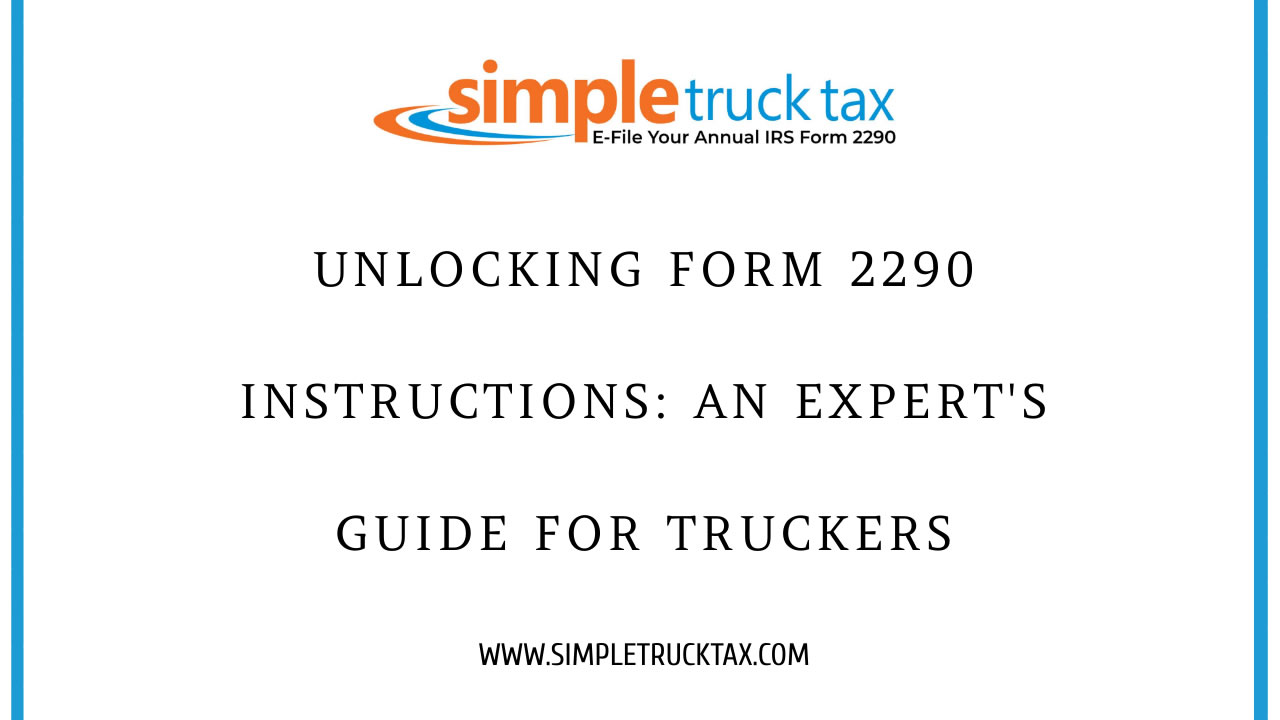
Unlocking Form 2290 Instructions: An Expert's Guide for Truckers
Form 2290, also known as the Heavy Highway Vehicle Use Tax Return, is a crucial document that truckers need to file every year. This form is used to calculate and pay the taxes owed on heavy vehicles operating on public highways. However, the process of filling out Form 2290 and understanding its instructions can be daunting for many truckers. In this expert's guide, we will help you unlock Form 2290 instructions, making the filing process easier and less stressful.
1. Understanding the Purpose of Form 2290:
Before diving into the instructions, it's essential to understand why Form 2290 exists. The taxes collected through this form are used to fund the maintenance and construction of highways. By paying these taxes, truckers contribute to the improvement of the infrastructure they heavily rely on. It is important to recognize the significance of this form and the impact it has on maintaining the roads.
2. Gathering the Required Information:
To accurately complete Form 2290, you will need specific information about your vehicle(s). This includes the Vehicle Identification Number (VIN), gross taxable weight, and the date the vehicle was first used on public highways during the tax period. Having this information readily available before starting the filing process will save you time and prevent potential errors.
3. Determining Your Filing Method:
There are two methods for filing Form 2290: paper filing and electronic filing (e-file). While paper filing is still an option, e-filing is becoming increasingly popular due to its convenience and efficiency. Choosing the right filing method for you depends on your preference and circumstances. E-filing provides faster processing times and reduces the chances of errors, making it an attractive option for many truckers.
4. Understanding the Tax Calculation:
Form 2290 calculates the tax based on the vehicle's gross taxable weight and the month it was first used. The tax is divided into two categories: vehicles used less than 5,000 miles during the tax period and vehicles used 5,000 miles or more (or considered as a suspended vehicle). Understanding how the tax is calculated will help you accurately report the information and avoid overpaying or underpaying.
5. Reporting Suspended Vehicles:
Truckers often have vehicles that qualify as suspended vehicles, meaning they were used for less than 5,000 miles during the tax period. Reporting these vehicles correctly is essential to avoid unnecessary tax payments. Ensure you understand the requirements for suspended vehicles and accurately report their information on Form 2290.
6. Timely Filing and Payment:
Filing Form 2290 must be done by the last day of the month following the month of first use. For example, if your vehicle was first used in July, the deadline for filing and payment would be August 31st. Failing to file on time can result in penalties and interest charges, so it is vital to stay updated on the deadlines and meet them accordingly.
Form 2290 instructions may seem complex at first, but with the right guidance, they can be easily understood and followed. By grasping the purpose of the form, gathering the necessary information, choosing the appropriate filing method, understanding the tax calculation, reporting suspended vehicles accurately, and ensuring timely filing and payment, truckers can navigate the Form 2290 filing process with confidence. By unlocking the instructions, truckers can fulfill their tax obligations efficiently and contribute to the maintenance of the highways they depend on.
Note: For more information, visit IRS website